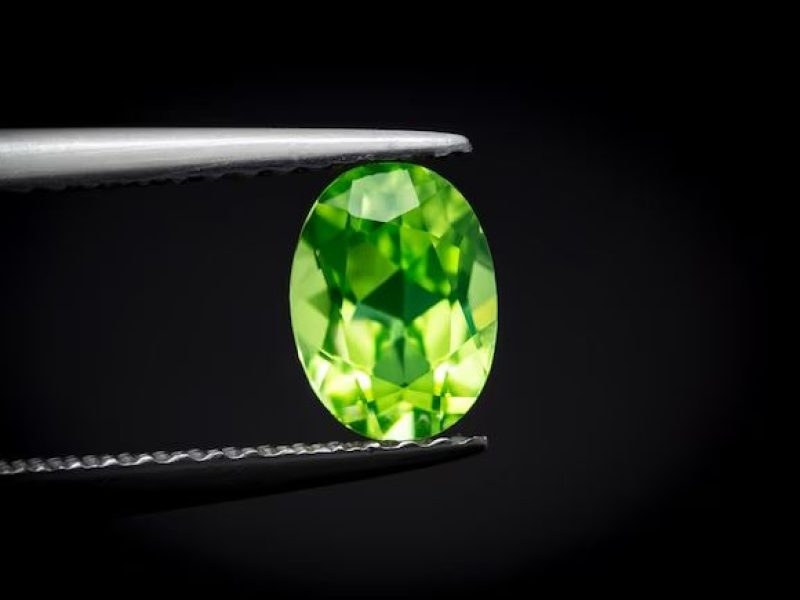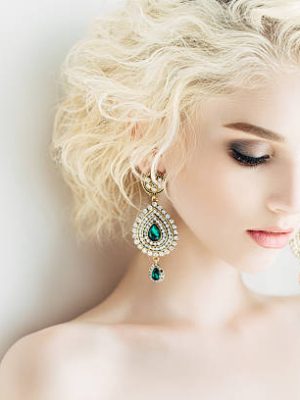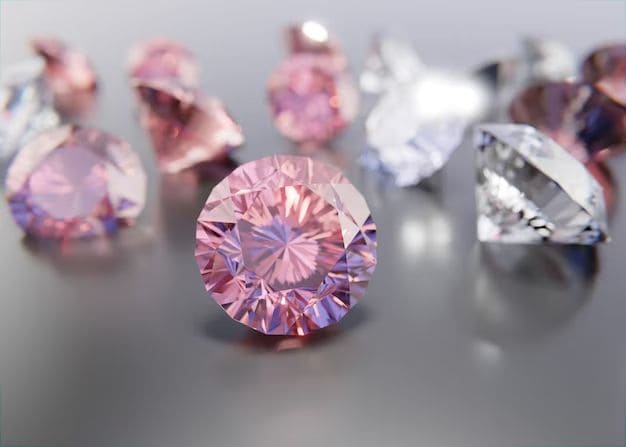
- Birthstone
Peridot: Illuminating August with Green Brilliance
Table of Contents
Why Peridot is the August Birthstone
Peridot, with its vibrant green hue, has been designated as the birthstone for August due to a confluence of historical, cultural, and symbolic factors.
Historically, peridot has been prized for millennia. Its association with ancient Egypt is particularly notable. The Egyptians, fascinated by its luminous green color, believed it to be the Symbol of the Sun. Its vibrant green color was associated with the life-giving properties of the sun. Culturally, green has long been linked to growth, renewal, and harmony. This solar connection aligns with the fiery, energetic qualities often attributed to the month of August. Moreover, the gem's discovery in volcanic rocks further reinforces its association with heat and passion.
Even as their belief, peridot is a symbol for Protection from Evil. They believed that peridot could ward off evil spirits and bring good luck. In addition, the Egyptians attributed healing properties to peridot, especially for conditions affecting the heart and lungs. Furthermore, as a rare and stunning gem, peridot was a symbol of wealth and status, allowing the wealthy to distinguish themselves from others.
These concepts resonate with the flourishing nature of August, a month characterized by abundant life and the peak of summer. Peridot's verdant color thus symbolizes the vitality and optimism often associated with this time of year.
In essence, peridot's rich history, its connection to solar energy, and its symbolic resonance with the attributes of August converge to make it the quintessential birthstone for this month.
What is the origin of the word "peridot"?
The exact origin of the word "peridot" is still debated among experts. However, there are two main theories:
- Arabic origin: One theory suggests that the word might have derived from the Arabic word "faridat," meaning "gem."
- Greek origin: Another possibility is that it comes from the Greek words "peri" (around) and "do" (give), suggesting something given in abundance.
It's important to note that these are just theories, and the true etymology of the word remains uncertain.
Where does peridot come from?
Peridot is a unique gemstone formed under intense pressure and heat, primarily found in:
- Volcanic rocks: It's brought to the Earth's surface through volcanic eruptions.
- Meteorites: Rarely, peridot can also be found in these celestial bodies.
Major Sources of Peridot
While peridot can be found in various locations, some of the most significant sources include:
- San Carlos Apache Reservation, Arizona, USA: This is the world's largest peridot deposit.
- Myanmar (Burma): Known for producing high-quality peridot.
- Pakistan: Offers significant peridot deposits.
- China: A major producer of peridot.
- Other locations: Australia, Brazil, and Zambia also contribute to the global peridot supply.
It's important to note that while peridot is found in these regions, the actual mining and extraction processes can be complex and vary greatly depending on the specific location.
What are the different types of peridot?
While there aren't distinct "types" of peridot like other gemstones, the quality and value of peridot are primarily determined by its:
- Color: The most prized peridot has a pure, vivid green color. However, the color can range from yellowish-green to olive green.
- Clarity: Like most gemstones, peridot with fewer inclusions (internal flaws) is generally more valuable.
- Cut: The cut of the peridot can significantly affect its brilliance and overall appearance.
- Carat weight: Larger peridot stones are rarer and consequently more valuable.
- Origin: Peridot from certain locations, like Changbai, China, is often considered of higher quality due to its specific characteristics.
So, while there aren't specific names for different types of peridot, these factors influence its overall classification and value.
How can I tell if my gemstone is real peridot?
While it might be challenging to definitively identify a gemstone without professional equipment, here are some key characteristics of peridot that can help you distinguish it from other gems:
Color
- Unique Green Hue: Peridot has a distinct yellowish-green or olive green color that is often described as "lime green."
- Consistency: The color of peridot remains consistent under different lighting conditions.
Clarity
- Inclusions: Peridot often contains small inclusions, which are natural characteristics of the gemstone.
- Avoidance of Flawless Stones: If a peridot appears completely flawless, it's likely a synthetic or imitation.
Hardness
- Mohs Hardness Scale: Peridot has a hardness of 6.5 to 7, which is relatively hard. You can scratch the stone with a knife to get a general idea of its hardness, but be cautious as this can damage the stone.
Other Characteristics
- Magnetic Properties: Peridot contains iron, so it can be slightly magnetic.
- Double Refraction: When viewed through a loupe, peridot exhibits double refraction, meaning you'll see a double image of objects through the stone.
Important Note: These methods are basic and might not be foolproof. For accurate identification, it's always recommended to consult a professional gemologist.
What are the common imitations of peridot?
While peridot is a relatively uncommon gemstone, there are still imitations in the market. Here are some common ones:
- Glass: This is the most common imitation. Glass imitations often have a slightly cloudy or foggy appearance compared to the clarity of natural peridot. They also tend to have a different color intensity under different lighting conditions.
- Synthetic Cubic Zirconia (CZ): While CZ is usually colorless, it can be treated to mimic the green color of peridot. However, CZ is significantly harder than peridot and lacks the natural inclusions typically found in peridot.
- Green Quartz: Some green quartz varieties can resemble peridot, but they usually have a more yellowish or bluish-green tint.
Remember, these are just general guidelines, and it can be difficult to identify imitations without proper equipment or expertise. If you're unsure about the authenticity of a peridot, it's always best to consult a professional gemologist.
To ensure the authenticity of your peridot jewelry, it's crucial to purchase from reputable sources. Artemies Gems and Jewelry, with a strong reputation for quality and transparency, is an excellent choices. By selecting pieces from trusted sellers, you can increase your chances of owning genuine peridot jewelry.
Remember, when buying precious gemstones, it's always advisable to ask for certificates of authenticity and consider getting your jewelry appraised by a qualified gemologist. You will receive a certificate of authenticity for your jewelry from Artemis Gems and Jewelry.
How does peridot relate to different zodiac signs?
Peridot is often associated with specific zodiac signs and planetary influences:
- Leo: Peridot is one of the traditional birthstones for Leo. Its connection to the sun aligns with Leo's fiery and confident nature.
- Gemini and Virgo: In Indian Vedic astrology, peridot is associated with the planets Mercury and Venus, which correspond to Gemini and Virgo. It's believed to enhance communication, intelligence, and love for these signs.
- Other Signs: While not as strongly linked, some astrologers believe peridot can benefit Taurus, Libra, Capricorn, and Aquarius in various ways, such as grounding, balancing, and stimulating creativity.
It's important to note that astrology is a complex subject, and these are general associations. Individual experiences may vary.
What are the best alternatives to peridot for those with allergies or who prefer different gemstones?
If you're looking for alternatives to peridot, consider these options:
- Spinel: Often referred to as the "great imitator," spinel comes in a wide range of colors, including beautiful green shades that can resemble peridot. It's typically more affordable than peridot.
- Green Sapphire: While less common, green sapphires offer a luxurious and sophisticated alternative to peridot. They are generally more expensive.
- Chrysolite: This term was once used interchangeably with peridot, but it now refers to a different gemstone. However, it's worth mentioning as it might be a term you encounter.
Some gemstones share a similar green hue with peridot:
- Green Quartz: This is a more affordable option, but its color intensity and clarity often differ from peridot.
Demantoid Garnet: While typically known for its green color, demantoid garnet is usually more expensive than peridot and has a different brilliance. (to see demantoid go to “Unveiling the Mystique of January's Birthstone: Garnet”)
Famous Peridot Jewelry and Peridot in History
Peridot has adorned royalty and celebrities throughout history. Here are a few notable examples:
- Cleopatra's Emerald Collection: It's believed that many of Cleopatra's famous emerald jewels were actually peridot.
- Habsburg Peridot Parure: This stunning set includes a tiara, necklace, and earrings featuring large, high-quality peridots.
- Modern Celebrities: Many contemporary celebrities, including Kate Middleton and Anna Wintour, have been spotted wearing peridot jewelry, contributing to its resurgence in popularity.

What Are the Peridot's Metaphysical Properties?
Peridot is often associated with various metaphysical properties:
- Heart Chakra: It's believed to open and balance the heart chakra, promoting love, compassion, and emotional healing.
- Clarity and Focus: Peridot is said to enhance mental clarity, focus, and problem-solving abilities.
- Protection: Some believe peridot offers protection from negative energies and brings good luck.
- Joy and Happiness: Its sunny disposition is thought to uplift the spirit and promote feelings of joy and contentment.
It's important to remember that these are metaphysical beliefs and not scientifically proven.
Peridot in Modern Jewelry Trends
Peridot has experienced a resurgence in popularity in recent years. Its vibrant green color complements various fashion styles and occasions:
- Minimalist Designs: Peridot's simple elegance lends itself well to minimalist jewelry pieces.
- Bold Statements: Larger peridot stones can create striking and eye-catching statement jewelry.
Peridot Compatibility with Other Gemstones
Peridot's vibrant green color makes it a versatile gemstone that can be paired with a variety of other stones. Here are some popular combinations:
- Complementary Colors: Pair peridot with purple gemstones like amethyst or sapphire for a striking contrast.
- Neutral Tones: Combine peridot with neutral-colored stones like diamonds, white sapphires, or pearls for a classic and elegant look.
- Earth Tones: Pair peridot with brown or orange gemstones like garnet or citrine for a warm and inviting aesthetic.
Remember: The best combination depends on the desired look and the occasion. Experiment with different combinations to find your perfect match.
Is Peridot Expensive?
Generally, peridot is considered a more affordable gemstone compared to diamonds, rubies, or sapphires. Its price is influenced by factors like size, color, clarity, and cut.
- Average Price: Typically, peridot ranges from $50 to $80 per carat.
- Higher-End Stones: Larger, high-quality peridots with exceptional color can command prices of $400 to $450 per carat or even more.
Compared to other gemstones, peridot offers excellent value for its beauty and brilliance. It's a great option for those who appreciate unique and eye-catching jewelry without breaking the bank.
How should I care for my peridot jewelry?
Peridot is a relatively durable gemstone, but it requires gentle care. To maintain its luster:
- Clean regularly: Use warm, soapy water and a soft cloth to clean your peridot jewelry. Avoid harsh chemicals, ultrasonic cleaners, and steam cleaners.
- Store safely: Keep your peridot jewelry in a soft cloth-lined box to protect it from scratches. Avoid storing it with other harder gemstones.
- Avoid extreme conditions: Peridot is sensitive to heat, so avoid exposing it to high temperatures.
Can peridot be cleaned with ultrasonic cleaners or steam cleaners?
No, ultrasonic cleaners and steam cleaners are not recommended for cleaning peridot jewelry. The vibrations and heat can damage the gemstone.
Does peridot fade or change color over time?
Peridot is generally stable and doesn't fade or change color under normal conditions. However, prolonged exposure to extreme heat or chemicals might affect its appearance.
Related Posts
Fall in Love with Jewelry, Stories, and Secrets
Join Artemies Magazine for insider jewelry tips, trend updates, and subscriber-only discounts.



